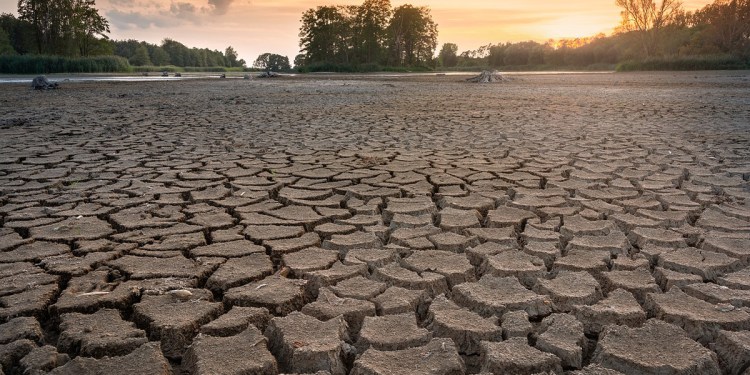Collaboration key to meeting global water challenges

As global water challenges continue to mount, exacerbated further by population growth and climate change, there is an opportunity for the international water community to collaborate on pressing concerns, leaning into everyone’s strengths to accelerate action.
During the Ozwater’24 WSAA panel session exploring international perspectives on water challenges and opportunities, delegates heard from an impressive line-up of global leaders.
Speakers included David Henderson (CEO, Water UK), Dr. Beverley Stinson (Executive Vice President of Global Water Business, AECOM USA), Benjamin Gestin (General Manager, Eau de Paris), Gillian Blythe (CEO, Water New Zealand) and Nerina Di Lorenzo (Managing Director, Melbourne Water).
The panel touched on a diverse array of perspectives and topics, from hosting the 2024 Olympics in Paris to water reform in New Zealand, as well as infrastructure resilience, wastewater pollution and community trust, and international water utility partnership.
AECOM’s Dr. Beverley Stinson said her role on the panel was to share some insights on challenges facing the global water community – with the legacy of ageing assets combined with population growth one of the most pressing issues facing the sector today.
“There are a lot of agencies around the world dealing with ageing assets, and we are seeing an intensification of urbanisation with populations growing and also moving into cities, which adds extra pressure to under-maintained assets,” she said.
“Asset management and maintenance, and the underinvestment that has been systemic in most major metro areas across the globe, is probably one of the biggest issues today.
“Systems that were installed as much as 100 years ago are outside capacity and are often in poor condition. The addition of extra people is really elevating this issue globally.”
One of the key takeaways from the panel was the fact that the water challenges faced by organisations around the world are all similar, Dr. Stinson said, presenting an opportunity for the global water sector to work together on solutions.
“There are some big trends that we are seeing consistently across the globe. I’ve been in the UK and Europe talking to a lot of the agencies there. No matter where you go, we are all experiencing similar challenges,” she said.
“But having similar challenges presents a great opportunity for the global water sector to collaborate as a way of accelerating action on important water issues across the world.”
Climate considerations
The world’s population is projected to reach 9.7 billion by 2050, and 70% of the population is expected to be urban, with the addition of more than 40 mega cities globally.
Dr. Stinson said population growth and urbanisation are set to combine with climate change to pose unprecedented challenges in regards to urban stormwater management and drought resilience – with examples already occurring around the world.
“Populations are growing and urbanisation is intensifying – these are the base-line trends across the globe. But there are now also exacerbating circumstances around climate change. It has really elevated the public’s awareness and concern,” she said.
“Sudden deluge and the inability to divert stormwater in big cities is causing a lot of flooding. Flooding in cities is very common in many parts of Europe, the USA and Canada, particularly in older cities.
“Flash floods are becoming more and more prevalent, and lower-income communities tend to bear most of the impacts. It's a big issue and is set to increase.”
Dr. Stinson said prolonged drought is another growing concern around the world, with Australia addressing this issue at present with desalination, which is effective given the significant coastal population.
“Desalination is great for major metro areas. But in many places, there is a greater move towards water reuse,” she said.
“In the USA, California is moving not only to indirect but also direct potable reuse. Regulations have recently been approved in the state to enable wastewater to be treated to the highest quality possible and potentially injected right into the drinking water pipelines.
“This is the most radical step forward in water reuse that we’ve seen in a very long time.”
Dr. Stinson said there was a discussion around water reuse in San Diego in 1993 during a particularly bad drought: “But someone coined the mantra ‘toilet to tap’, which put an end to any discussion around reuse. There was enough yuck factor to end all public debate on that idea”.
“Here we are, 30 years later, and the community is begging the officials to move forward with it. They are very aware that they need that water. It’s quite a journey we’ve been on, and parts of Australia are in the stages of this journey now, too,” she said.
“Reflecting on the journey that others have been on can be helpful, plus the science is there. Singapore buys most of its water from Malaysia, but it wants to become water independent, and it looks like they will be by 2030, on account of utilising recycled water.
“They started the education process in schools 30 years ago, and the acceptance has grown to a point to move on incorporating recycled water into potable supplies. It can take a whole generation of education to make that happen though.”
Water-energy nexus
Other major trends in global water challenges include the energy transition and the water-energy nexus, as well as sustainable mining and emerging contaminants.
“Australia has one of the more comprehensive and progressive views on pumped storage and hydropower,” Dr. Stinson said.
“But now also moving towards hydrogen as a battery storage for energy This elevates the need for desalination, but also opens up a whole new market for Australia and globally.
“Other trends that are interesting globally include sustainable mining for rare and green metals. Australia is very rich in natural resources, but the drive for social license to continue mining requires we do things differently.
“It requires social acceptance and environmental sensitivity and bringing value to communities around these mining areas is very important. There will be no energy transition without these metals and minerals and so we need to find new ways of sourcing the material we need.
“There’s also the issue of PFAS, which has been regulated in the US at about 4 parts per trillion, which is the most stringent regulation in the world. This trend will pick up over time.”
Dr. Stinson said industrial water use is also a keen focus globally, with water used predominantly in agriculture, in most places, with industrial the second biggest user, followed by domestic.
“Industrial water reuse and zero waste is a major trend. And all of this work that’s being done is facilitated by the digital transformation that’s sweeping the globe,” she said.
Despite the significant challenges, Dr. Stinson said partnering to bolster one another's strengths through these issues is going to be key to overcoming them successfully.
“Our mantra at AECOM is to think and act globally. There is an expert in the world that is slightly ahead of you and that can help. We all need to lean into each other's expertise,” she said.
“Creating collaboration across utilities, universities and organisations is how this works, and it's a really exciting time to be part of the industry and to see this partnership occurring.”



